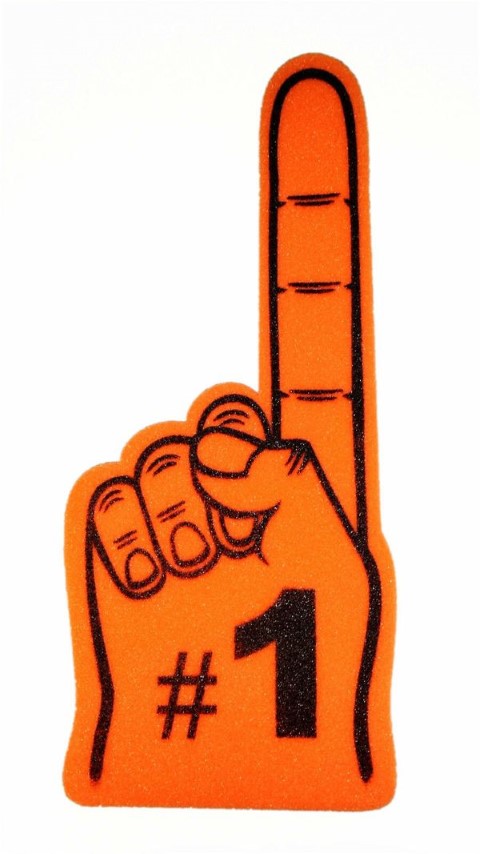One way to make an event special is to create customized T-shirts. At SpiritGear.com, we specialize in helping you design the perfect shirt to meet your individual needs. But before you tackle the nuts and bolts of T-shirt design, you’ll want to consider the type of printing design to use. We’ll help you answer the question regarding embroidery vs. screen printing: Which one is best for me?
Defining Your T-shirt Printing Options
When looking to design a T-shirt, you will probably feel comfortable picking the color and style of T-shirt. You may even know exactly what you want the shirt’s message to be.
But when it comes time to pick the type of printing to use on the shirts, you may feel less sure of yourself. Don’t worry, though. Once you have an understanding of your options in this area, you’ll be able to make the best choice for your printing needs.
The Process of Screen Printing
When creating a custom T-shirt, screen printing is the most common type of printing
method. You can use multiple colors with screen printing, and you can incorporate images and even your own logos. Once you upload the image to our site, we’ll prep it for screen printing. It’s an easy process!
To create a screen printed T-shirt, our designers at SpiritGear.com force inks of different colors onto the T-shirt fabric. The ink goes through a stencil or, more commonly, a mesh screen before contacting the shirt. Each different color of ink must go through its own stencil or screen.
The Process of Embroidery
Creating a T-shirt with an embroidery pattern involves stitching threads onto the shirt into the desired pattern. A computerized embroidery machine will sew the image onto the garment. The machine can create a digital copy of your desired image or logo, so setting up for this type of work is easier than you might think. To create different colors, the machine will use different threads.
Embroidery is different from using a patch on a garment. With embroidery, the thread is sewn directly onto the shirt or garment. When applying a patch, the image is sewn or screen printed onto the patch. That patch is then either sewn or attached to the garment separately.
Types of Fabric in Use
To start the process of picking between screen printing and embroidery for your individual project, it’s important to know the strengths and weaknesses of each type of printing on different fabrics.
- Golf Shirts and Dress Shirts – Embroidery is the better option for printing on golf shirts and dress shirts. The embroidery job has a stylish look that works well with these types of shirts. Screen printing tend to not look ideal on the fabrics used in these types of shirts because the fabric contains small ridges.
- T-shirts and Sweatshirts – Fabrics that are soft and smooth, such as cotton, that are used for T-shirts and sweatshirts work great with screen printing. Attempting to use embroidery on these types of shirts can lead to a bunching of the shirt around the threads, which looks bad.
- Jackets – Windbreaker jackets often have a slick type of fabric on them, which doesn’t lend itself to a clear screen print. Instead, you’re going to want to use embroidery on this type of garment.
- Headwear – Although you can screen print on a baseball cap or other type of headwear, embroidery tends to have better results. Most caps and hats have multiple, thick seams on them. Trying to apply a screen print over one of these seams causes a poor look. But embroidery thread looks fine when it goes across one of the seams.
Types of Images in Use
Additionally, the type of image you want to apply to a garment will play a role in choosing between embroidery and screen printing.
- Images With Shading and Gradient Colors – If the image you want to use is a complex one that requires gradient colors, for example, screen printing is the only option. Shading within the image requires screen printing too. Embroidery simply cannot recreate the look of subtle color changes.
- Distressed Look – A screen print job allows you to create a distressed logo, which is a screen printing technique to make the image on the garment look older and worn out. This type of effect isn’t possible with embroidery.
- Three-Dimensional Look – Embroidery creates an almost 3D look for the image or logo being applied to the garment. The printer can use thick thread or multiple layers of threads to give the image or logo some thickness. A screen print job is going to be flat and tight to the fabric with no thickness to it.
Cost Comparison
Comparing the costs between screen printing and embroidery depends in largely on what type of T-shirt printing job you’re seeking.
- Size of Printed Area – The size of the area to be printed on the shirt is going to play the primary role in determining cost. If you’re seeking an image that will cover most of the chest and/or the back area of the shirt, screen printing is the cheaper option. But if it’s a small area, such as a logo over the left chest, embroidery becomes a cost effective alternative.
- Small Print Runs – If you’re having a small area printed in a job that will consist of less than 100 shirts, embroidery is often the better choice from a cost perspective. If you’re using more than one color in this small print run, embroidery is an even better choice.
Environmental Concerns
When selecting a screen printing ink, you’ll find these materials are more environmentally friendly than they were in the past.
Many times, T-shirt printers will use plastisol-based inks, which work great for creating screen prints. But they also require chemicals for clean-up.
Water-based inks are portrayed as an environmentally conscious option for screen printing, especially during the clean-up process. But water-based screen printing inks still require a variety of chemicals to work. Water-based inks sometimes also dry too quickly, causing problems with the application process, which leads to a higher generation of waste.
If you have questions about SpiritGear.com’s screen printing process, please contact us.
Final Thoughts
As you can see, figuring out whether screen printing or embroidery is better in your situation requires some planning ahead. Once you have this aspect of your print job figured out, you’re ready to use SpiritGear.com’s Design Your Own T-shirt platform to start the design process. If you have any further questions on embroidery vs. screen printing or any other aspect of your T-shirt design job, please contact us today!

